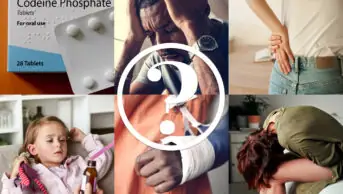Total knee replacement (TKR) is a painful surgical procedure. Effective and patient-centred post-operative pain management leads to better and earlier functional recovery and reduces the risks of thromboembolic disorders and infections; therefore, avoiding delays in hospital discharge and increased healthcare costs[1].
Preoperative pain, anxiety, age and type of surgery are significant predictors for post-operative pain and type of surgery, age and psychological distress are significant predictors for analgesic consumption[2].
To ensure effective postoperative pain management and minimise the use of opioid analgesics, the pain team at Chelsea and West Middlesex University Hospital developed enhanced recovery guidelines that include multimodal analgesia[3]. These guidelines recommend the use of two or more drugs or modalities — with different mechanisms or sites of action — for synergistic effects on pain, together with the use of regional analgesic techniques[3]. This approach allows earlier mobilisation and rehabilitation, reducing hospitalisation times and costs[4].
It is known that opioids can cause sedation, nausea and vomiting, constipation, respiratory depression and increase the risk of falls. In the United States, of 42,000 deaths related to opioid overdoses in 2016, around 40% involved a prescription opioid[5]. However, studies on the control of pain during the post-operative rehabilitation period and post-hospital discharge are not common.
An observational, retrospective cohort audit of patients who had TKR from 1 January to 31 March 2019 at West Middlesex University Hospital was performed through the retrieval of information from pain management audit forms, and hospital medical and GP records to assess:
- Usage and consumption of pre and post-operative analgesics;
- Compliance with the trust’s enhanced recovery post-operative analgesia guidelines;
- Information given to the patients at time of discharge;
- Need for rescue opioid pain medications following discharge.
Patients were contacted by telephone to complete a questionnaire about the information they received, their pain relief and their need of analgesics post-discharge.
A total of 61 patients (31 females and 30 males, aged 56–90 years) underwent TKR during the three-month period. Of the total patients identified, 41 patients’ medication records were audited and 46% of patients (n=19) participated in the telephone survey. Verbal consent was obtained prior to the telephone questionnaire.
Participants were from different ethnicities, including nine Caucasian, nine Asian and one black.
Overall, 63% of patients (n=26) were taking analgesics at home prior to surgery (either co-dydramol or co-codamol). Of these patients, 53% (n=14) were taking non-steroidal anti-inflammatory drugs in addition to co-dydramol or co-codamol, and 19% (n=5) were on strong opioids (e.g. oxycodone or morphine). All patients were prescribed regular analgesia by anaesthetists to take while in hospital following their surgery, according to the local hospital guidelines.
All patients achieved the goals required for discharge — walking with crutches and climbing stairs.
When asked about the pain control while in hospital, 84% of patients (n=16) that participated in the telephone survey reported that their pain was well controlled.
In addition, 84% of patients (n=16) took their analgesics regularly, as prescribed, following hospital discharge and they reported that their pain was fairly controlled. Only one patient reported that they needed to buy an over-the-counter analgesic.
All patients interviewed reported that their pain was well controlled at three months following surgery and that they had enough information regarding pain relief prior to their discharge from hospital.
TKR is known to be a painful procedure from which to recover and recent attention has focused on post-operative pain control, particularly in the context of the “enhanced recovery” protocols, in which the accelerated rehabilitation for fast recovery requires pain-free patients, obtained with multimodal anaesthetic protocols[6].
Targeting several different steps of the pain pathway allows for effective pain control with fewer side effects[7]. A patient-centred pain management plan and physician responsiveness is also essential.
In conclusion, the findings of this audit, despite the limitation of its small patient cohort, report very good pain control with perioperative anaesthetic protocols, and the pain treatment protocols in use after uncomplicated TKR. It also highlights the importance of provision of information to patients on appropriate use of analgesics after surgery to minimise side effects and achieve adequate pain control.
Thewodros Leka, lead directorate pharmacist, Miriam A Kadry, consultant in anaesthesia and pain medicine and Roya Movahedi, junior clinical fellow, West Middlesex University Hospital
- 1Ramsay MAE. Acute Postoperative Pain Management. Baylor University Medical Center Proceedings. 2000;13:244–7. doi:10.1080/08998280.2000.11927683
- 2Robleda G, Sillero-Sillero A, Puig T, et al. Influence of preoperative emotional state on postoperative pain following orthopedic and trauma surgery. Rev. Latino-Am. Enfermagem. 2014;22:785–91. doi:10.1590/0104-1169.0118.2481
- 3Pain management. Chelsea and Westminster Hospital NHS Foundation Trust. 2021.https://www.chelwest.nhs.uk/services/surgery/pain-management (accessed Dec 2021).
- 4Chua H, Brady B, Farrugia M, et al. Implementing early mobilisation after knee or hip arthroplasty to reduce length of stay: a quality improvement study with embedded qualitative component. BMC Musculoskelet Disord. 2020;21. doi:10.1186/s12891-020-03780-7
- 5What is the U.S. opioid epidemic? U.S. Department of health and human services. 2021.https://www.hhs.gov/opioids/about-the-epidemic/index.html (accessed Dec 2021).
- 6De Luca ML, Ciccarello M, Martorana M, et al. Pain monitoring and management in a rehabilitation setting after total joint replacement. Medicine. 2018;97:e12484. doi:10.1097/md.0000000000012484
- 7Min B-W, Kim Y, Cho H-M, et al. Perioperative Pain Management in Total Hip Arthroplasty: Korean Hip Society Guidelines. Hip Pelvis. 2016;28:15. doi:10.5371/hp.2016.28.1.15


